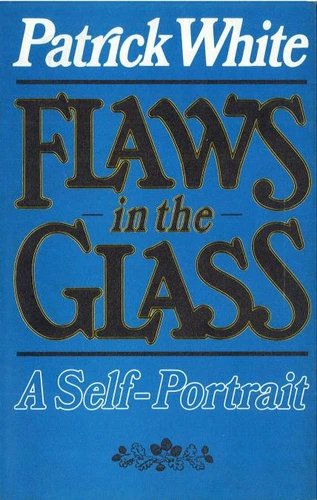Romancier australien. Prix Nobel de Littérature en 1973.
Flaws In The Glass. A Self Portrait
Par :Formats :
Disponible dans votre compte client Decitre ou Furet du Nord dès validation de votre commande. Le format ePub protégé est :
- Compatible avec une lecture sur My Vivlio (smartphone, tablette, ordinateur)
- Compatible avec une lecture sur liseuses Vivlio
- Pour les liseuses autres que Vivlio, vous devez utiliser le logiciel Adobe Digital Edition. Non compatible avec la lecture sur les liseuses Kindle, Remarkable et Sony
- Non compatible avec un achat hors France métropolitaine
 , qui est-ce ?
, qui est-ce ?Notre partenaire de plateforme de lecture numérique où vous retrouverez l'ensemble de vos ebooks gratuitement
Pour en savoir plus sur nos ebooks, consultez notre aide en ligne ici
- Nombre de pages260
- FormatePub
- ISBN978-1-4481-8987-8
- EAN9781448189878
- Date de parution31/07/2013
- Protection num.Adobe DRM
- Infos supplémentairesepub
- ÉditeurVintage Digital
Résumé
The appearance of this self-portrait by Patrick White is a literary event for which his readers and admirers have long hoped. He explains how on the very rare occasions when he re-reads a passage from one of his books, he recognizes very little of the self he knows. This 'unknown' is the man who interviewers and visiting students expect to find, but 'unable to produce him', he prefers to remain private - or as private as anyone who has been awarded the Nobel Prize for Literature can ever be.
But in this book is the self Patrick White does recognize, the one he sees reflected in the glass. It is a remarkable book. In a shifting sequence we learn of youth in Australia; the 'expensive prison', his English boarding school; Cambridge with holiday trips to Germany; London in the Blitz; RAF wartime intelligence and compensations of life in Australia. There are journeys to cities and landscapes round the world which take on more reality than places one has actually visited.
He tells us whom he has loved and hated and of his opinions - political and literary. He introduces us to a host of characters from Australian cousins to Stravinsky and Queen Elizabeth - and of course to Manoly Lascaris, who in 1942 'became the central mandala in my life's hitherto messy design.' He describes what he sees in the glass's reflection with such power that it seems no artist can have attempted or executed a self-portrait so lifelike before.
But in this book is the self Patrick White does recognize, the one he sees reflected in the glass. It is a remarkable book. In a shifting sequence we learn of youth in Australia; the 'expensive prison', his English boarding school; Cambridge with holiday trips to Germany; London in the Blitz; RAF wartime intelligence and compensations of life in Australia. There are journeys to cities and landscapes round the world which take on more reality than places one has actually visited.
He tells us whom he has loved and hated and of his opinions - political and literary. He introduces us to a host of characters from Australian cousins to Stravinsky and Queen Elizabeth - and of course to Manoly Lascaris, who in 1942 'became the central mandala in my life's hitherto messy design.' He describes what he sees in the glass's reflection with such power that it seems no artist can have attempted or executed a self-portrait so lifelike before.
The appearance of this self-portrait by Patrick White is a literary event for which his readers and admirers have long hoped. He explains how on the very rare occasions when he re-reads a passage from one of his books, he recognizes very little of the self he knows. This 'unknown' is the man who interviewers and visiting students expect to find, but 'unable to produce him', he prefers to remain private - or as private as anyone who has been awarded the Nobel Prize for Literature can ever be.
But in this book is the self Patrick White does recognize, the one he sees reflected in the glass. It is a remarkable book. In a shifting sequence we learn of youth in Australia; the 'expensive prison', his English boarding school; Cambridge with holiday trips to Germany; London in the Blitz; RAF wartime intelligence and compensations of life in Australia. There are journeys to cities and landscapes round the world which take on more reality than places one has actually visited.
He tells us whom he has loved and hated and of his opinions - political and literary. He introduces us to a host of characters from Australian cousins to Stravinsky and Queen Elizabeth - and of course to Manoly Lascaris, who in 1942 'became the central mandala in my life's hitherto messy design.' He describes what he sees in the glass's reflection with such power that it seems no artist can have attempted or executed a self-portrait so lifelike before.
But in this book is the self Patrick White does recognize, the one he sees reflected in the glass. It is a remarkable book. In a shifting sequence we learn of youth in Australia; the 'expensive prison', his English boarding school; Cambridge with holiday trips to Germany; London in the Blitz; RAF wartime intelligence and compensations of life in Australia. There are journeys to cities and landscapes round the world which take on more reality than places one has actually visited.
He tells us whom he has loved and hated and of his opinions - political and literary. He introduces us to a host of characters from Australian cousins to Stravinsky and Queen Elizabeth - and of course to Manoly Lascaris, who in 1942 'became the central mandala in my life's hitherto messy design.' He describes what he sees in the glass's reflection with such power that it seems no artist can have attempted or executed a self-portrait so lifelike before.



















